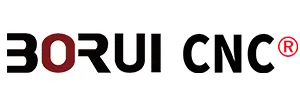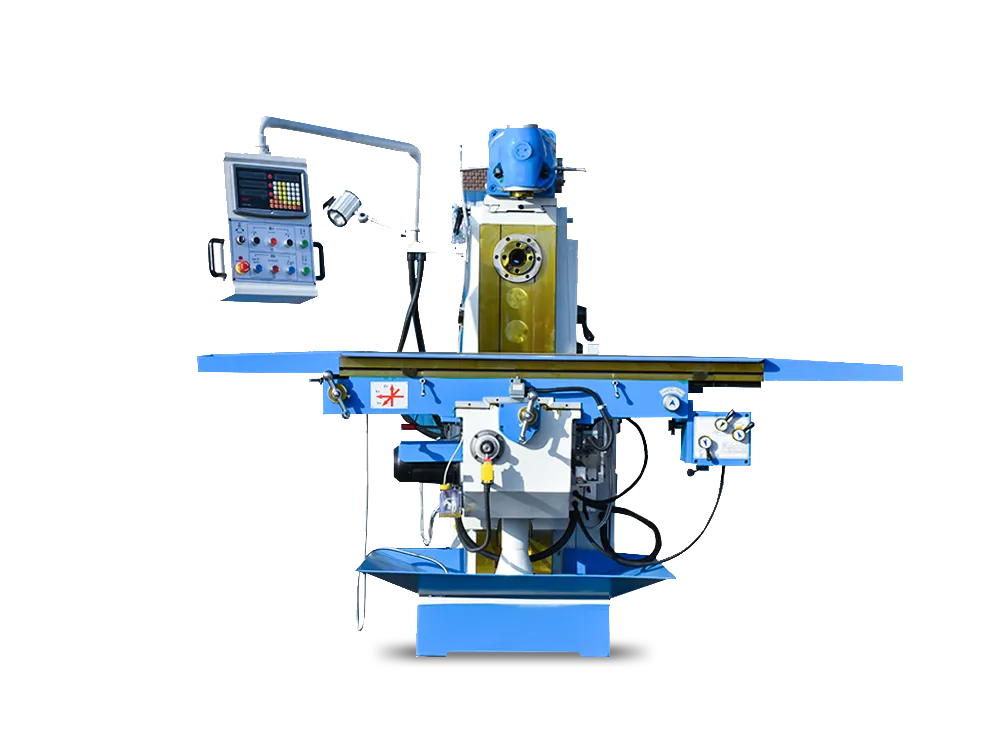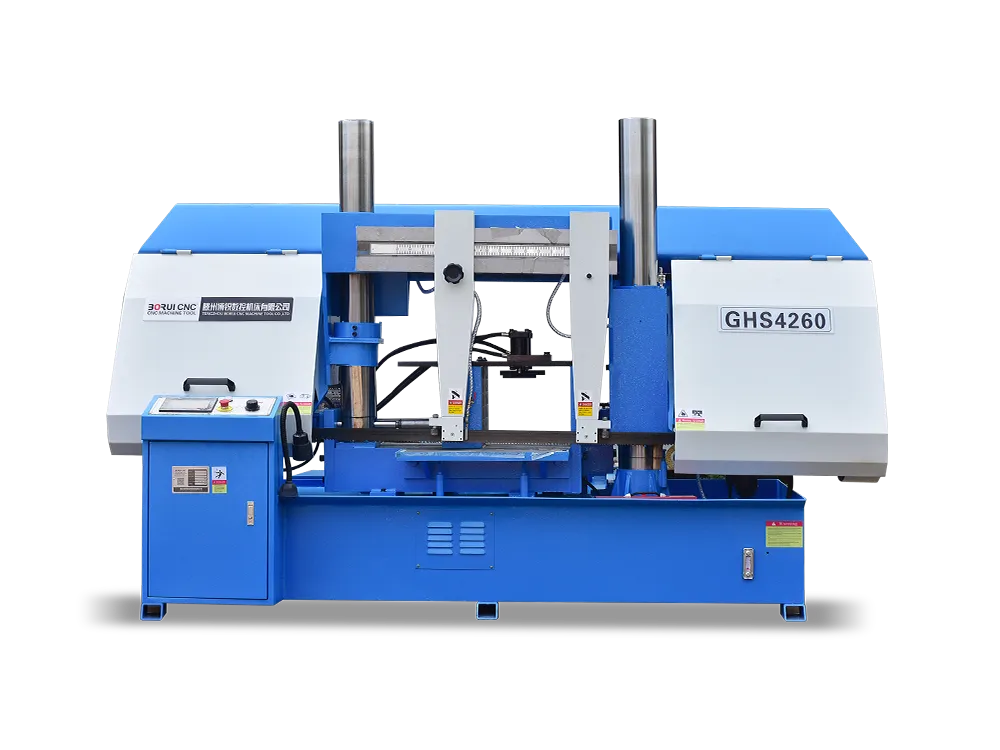Regarding innovation and efficiency in modern manufacturing and engineering, CNC machine tool centers are a critical element that cannot be ignored. CNC machine tool centers have become a revolutionary technology in the manufacturing industry. It brings a whole new dimension and efficiency to the production process.
In this article, we’ll take a closer look at what a CNC machine center is. We also discuss its wide range of applications in manufacturing. By understanding the core characteristics of this advanced technology, we can better understand how it plays a crucial role in technological trends. Let’s unveil the mysteries of CNC machine tool centers. Explore their compelling role in today’s industry.
What is CNC Machining Center
The basis for reading our article is first to understand the definition of a CNC machining center. Simply put, a CNC machining center is an advanced manufacturing equipment. It combines computer numerical control technology and a high degree of automation in machining. This machine tool is versatile. It can perform many different machining tasks on a single workstation. These include milling, drilling, and cutting. CNC machine centers control the movement of tools and workpieces through pre-programmed computer programs. It can achieve exact and repeatable machining.
What Are The Main Components of A CNC Machining Center?
A CNC machining center is an automated manufacturing equipment with many vital components. Its main components include many key elements. Each part is essential in ensuring high precision, efficiency, and reliability. These components work together to achieve precision machining. The following are the main components of a CNC machine center.
Bed
The bed is the basic structure of the machine tool and handles carrying all other components. It is usually made of heavy cast iron or welded. It has enough rigidity and stability to ensure accuracy and stability during processing.
Spindle
The spindle is the core component of a CNC machining center and is used to rotate the tool for cutting. The control of its speed and torque affects the processing speed and cutting quality. The spindle’s design and performance affect the machining center’s accuracy and efficiency. High-performance spindles often feature many speeds, high rotational speeds, and electric tool-switching capabilities.
Tool Changer
The tool library is part of the automatic tool-changing system. It is used to store and manage different types of tools. The tool magazine can hold many tools. CNC machining centers are usually equipped with automatic tool-changing systems. The automated tool-changing system can select and replace tools as needed during processing. It can improve production efficiency.
CNC Control System
The CNC system is the brain of the CNC machining center. It handles receiving, interpreting, and executing processing procedures. It achieves precise movement of each axis by controlling servo motors and actuators. The operator inputs processing instructions through the CNC system and monitors the process. It makes necessary adjustments to achieve precision processing.
Worktable
The workbench is the area where workpieces are placed and clamped. It usually has multi-axis motion capabilities and can move on the X, Y, and Z axes. Cutting tools are capable of performing a variety of operations on workpieces.
Servo Motors And Drives
Servo motors are responsible for driving the movement of each axis. Servo drives control the movement of the motor to achieve precise position and speed control.
Coolant System
The cooling system is used to cool the tool and workpiece. It prevents tool wear and workpiece deformation caused by overheating. This can be accomplished by spraying cooling fluid or flowing it along the tool path through a cooling system. It can also clean the cutting area, eliminate waste chips, and improve the quality and efficiency of processing.
Control Panel And Operator Console
The control panel is usually next to the machine tool and can enter and adjust machining parameters. The operation console provides an interface for operators to program, check, and change operations.
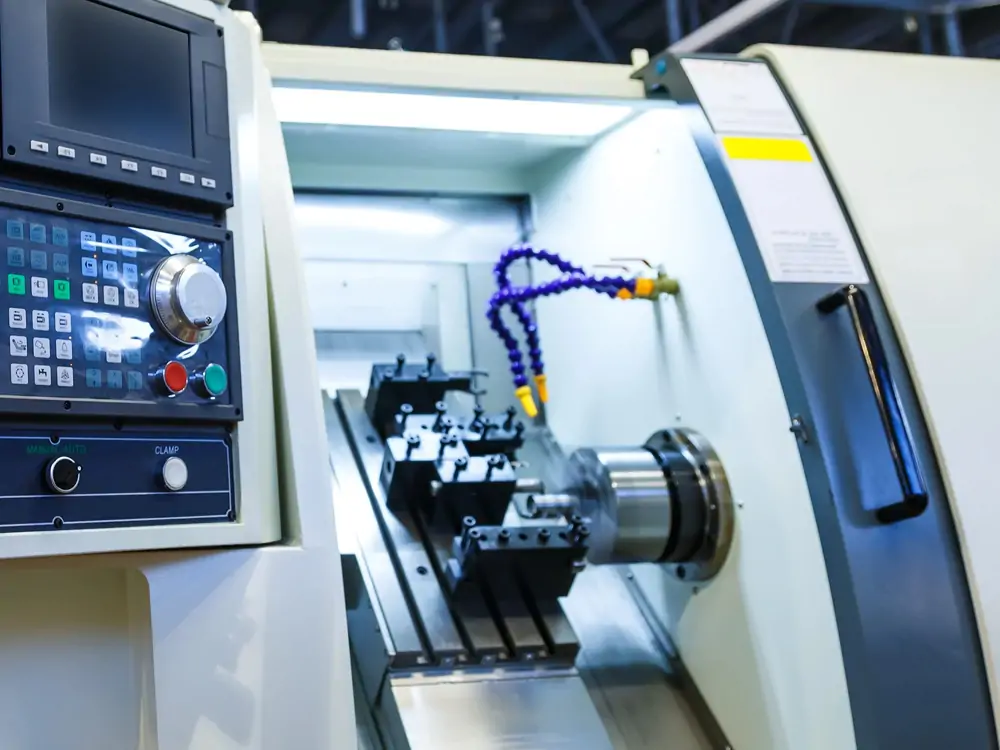
What Are The Spindles of CNC Machining Centers?
The spindle of a CNC machining center is one of its key components. It directly affects the performance and efficiency of the machining center. Different types of spindles are suitable for other processing needs. The following are some common CNC machine center spindle types.
Inline Spindle
A linear spindle is a spindle mounted directly on the machine tool structure. It usually has a higher speed. It is suitable for applications requiring high-speed cutting. Such as light metal processing and woodworking.
Cartridge Spindle
The staggered spindle uses a crossed roller bearing design for high speed and torque. This design makes it more suitable for heavy cutting and metal processing, such as milling and boring.
Built-In Spindle
Built-in spindles are integrated directly into the structure of the machine tool and are often used in compact machine tool designs. This spindle type offers high rigidity. It is suitable for applications requiring high precision, such as mold making.
Grinding Spindle
Grinding machine spindles are designed for grinding tasks with high rotational speed and precision. The spindle is suitable for surface grinding, internal and external cylindrical grinding, and other operations.
Multi-Spindle
The multi-axis spindle can install many tools at the same time to achieve simultaneous processing of many stations. It can improve production efficiency. This spindle is suitable for complex processes that need multi-tasking.
Electric Spindle
Electric spindles use electric drive and usually have high rotation and response speeds. It is suitable for tasks requiring high-speed, high-precision machining. Such as high-speed milling and light engraving.
Heated Spindle
Heated spindles are suitable for tasks where the temperature of the processing environment needs to be controlled. Such as plastics processing. It can provide a stable temperature and ensure processing quality.
Liquid Cooled Spindle
The cooling spindle is equipped with a cooling system. It can ensure the proper temperature is maintained during high-speed cutting. This spindle is suitable for long-term, high-intensity machining tasks.
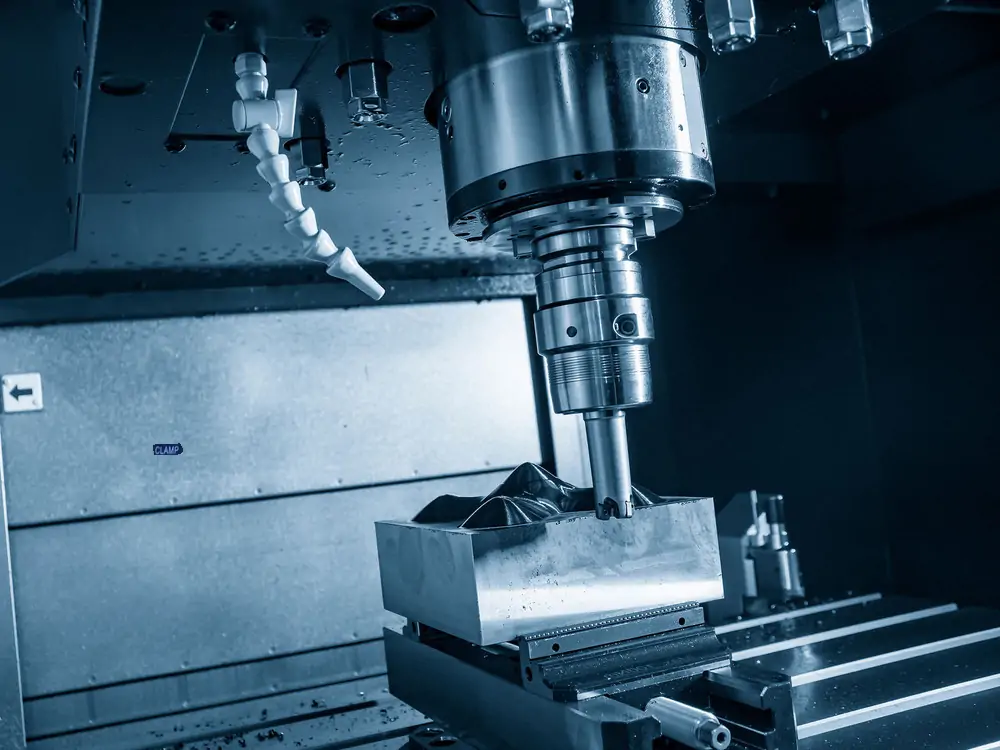
What Types of CNC Machining Centers
CNC machining centers come in many types. Each type is suitable for different processing needs and industries. Below are some common CNC machining center types.
Vertical Machining Center (VMC)
A vertical machining center has a vertical spindle with a worktable that moves on three axes. It is suitable for various metal and non-metal cutting processes. These include milling, drilling, and reaming. Vertical machine centers are used in mold manufacturing, aerospace, and automotive industries.
Horizontal Machining Center (HMC)
The spindle of a horizontal machining center is placed, and the table moves on three axes. It is suitable for processing large and heavy parts. Horizontal machine centers are usually used in manufacturing fields. Such as automobile engines and ship parts.
5-Axis Machining Center
Five-axis machining centers have two more axes of rotation, allowing them to cut at more angles and directions. This machine tool is suitable for complex surface processing and polyhedral parts. Such as plane parts and medical equipment.
Gantry Machining Center
The gantry machining center has a beam structure, and the worktable moves on the beam. It is usually used for processing large workpieces, such as ships, wind power blades, etc.
3-Axis Machining Center
The three-dimensional machining center is the most basic form. It has three linear axes: the X-axis, Y-axis, and Z-axis. This machine tool is suitable for regular three-axis cutting operations such as milling, drilling, reaming, etc.
Turning Center
Turning centers combine milling and turning functions with a rotary table and turret. It is suitable for processing complex rotating parts, such as shaft parts and ball screws.
Multi-Tasking Machining Center
Multi-task machining centers integrate many machining functions, including milling, turning, drilling, and more. It can complete many processes on the same machine tool. It increases productivity and reduces equipment changeover time.
High-Speed Machining Center
High-speed machining centers have high-speed spindles and high-speed feed systems. It is suitable for machining tasks that require high surface quality and precision. Such as mold making and aerospace components.

How Much Does A CNC Machining Center Cost?
CNC machining center prices vary based on various factors. These include model, specification, brand, features, and accessories. Therefore, it isn’t easy to give an exact price range. The following is the price range of CNC machine centers under general circumstances. It is for reference only. The actual price may fluctuate.
Small CNC Vertical Machining Center
Price Range: $10,000 to $50,000.
Features: Suitable for small-scale production and educational purposes. Usually, it has essential CNC functions.
Medium-sized CNC Vertical/Horizontal Machining Center
Price Range: $50,000 to $200,000.
Features: Suitable for medium-scale production. It has more powerful processing capabilities, a larger working area, and more advanced CNC functions.
Large CNC Horizontal Machining Center
Price Range: $200,000+.
Features: For mass production. Usually, it has a larger working area, higher spindle power, and more advanced functions. Such as an automatic tool-changing system, automatic workpiece measurement, etc.
Common Problems And Solutions For CNC Machining Centers
During the CNC machine center operation, you may encounter some common problems. Below are some possible issues and corresponding solutions.
Poor Cutting Quality
Possible Reasons: Tool wear, improper cutting speed setting, unstable workpiece clamping.
Solution: Replace cutting tools, adjust cutting and feed speed, and check and improve the clamping system.
Unsatisfactory Machining Accuracy
Possible Reasons: machine tool positioning error, guide rail wear, CNC system problems.
Solution: Carry out machine tool calibration, replace worn guide rail components, and check and adjust CNC system parameters.
Processing Vibration And Noise
Possible Reasons: Tool instability, improper cutting parameter settings, and machine tool structure problems.
Solution: Check the tool’s stability, optimize cutting parameters, and check and repair the machine tool structure.
Short Tool Life
Possible Reasons: unreasonable cutting parameters, mismatched cutting materials, and poor tool quality.
Solution: Adjust cutting parameters, select appropriate materials, and use high-quality tools.
CNC Program Error
Possible Reasons: Programming errors and CNC code problems.
Solution: Carefully check the CNC program and debug line by line.
Insufficient Cooling of Machine Tools
Possible Reasons: Cooling system failure, insufficient coolant.
Solution: Check the cooling system and ensure there is enough coolant.
Automatic Tool Changing System Failure
Possible Reasons: Tool magazine problem, tool sensor failure.
Solution: Check the tool magazine’s mechanical part and replace the tool sensor.
CNC System Alarm
Possible Reasons: Sensor failure, cable connection problem.
Solution: Check the sensor and check the cable connection.
Workpiece Holding Issues
Possible Reasons: The clamp is damaged, and the clamping force is insufficient.
Solution: Replace the clamp and adjust the clamping force.
Tool Collision
Possible Reasons: Program error, wrong workpiece, or fixture position.
Solution: Check the CNC program and adjust the position of the workpiece or fixture.
Conclusion
CNC machine tool centers are a fantastic field of technology. We are witnessing a revolution in manufacturing. It provides engineers and manufacturers with more efficient and precise tools. It also opens the door to endless possibilities for innovation and design.
The rise of CNC machine tool centers marks a solid step towards digitalization, automation, and intelligence in the manufacturing industry. Through the intelligent control of computers, we can achieve precise and repeatable machining in complex engineering tasks. It makes the production process more flexible and efficient. If you have any questions about what the CNC machining center is, please get in touch with us.
